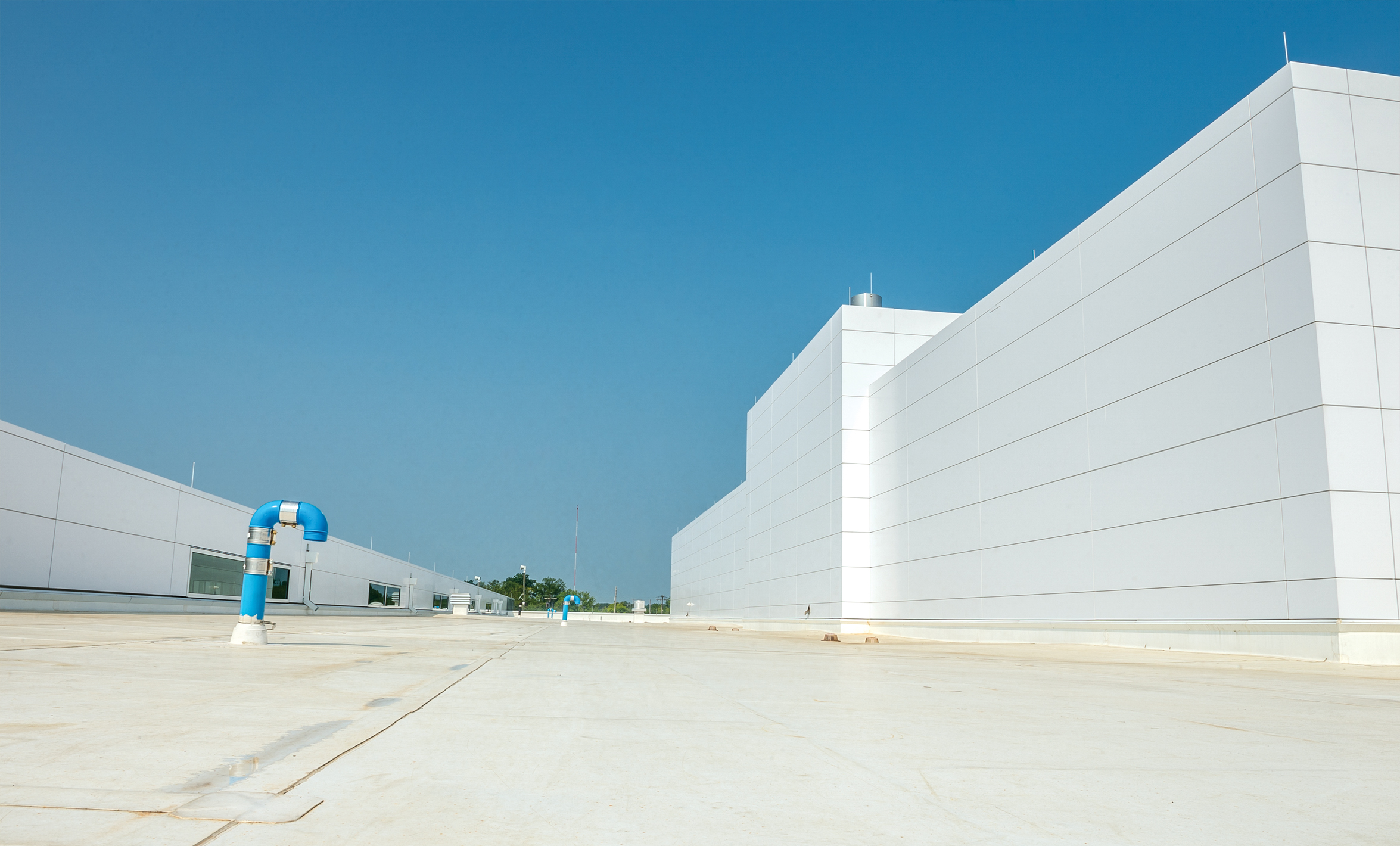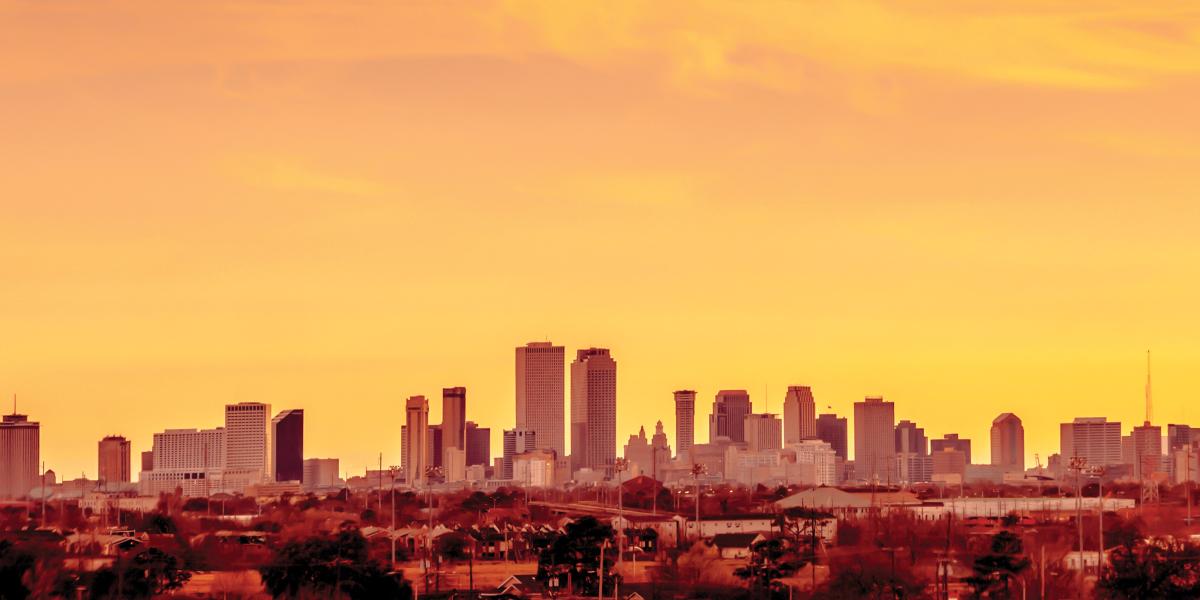Feeling the Extreme Heat
In New Orleans’ urban heat islands, too few green spaces, poverty, and inadequate cooling options make residents vulnerable to heat’s health risks.
August greeted New Orleans with a spate of extreme heat alerts warning of successive days of brutal heat with a triple digit heat index and little relief even after sundown.
The city’s heat problem is both chronic and multifaceted, says Julia Kumari Drapkin, founder and CEO of ISeeChange—an online platform for climate data and weather tracking.
“We're one of the oldest cities in America with homes that were designed before air conditioning. Many [homes] have been storm-battered, and our low- to moderate-income homeowners are really having a hard time maintaining their homes with such extreme costs and stresses,” she says. “One out of every three people in the South cannot afford their utility bills.” Some residents report seeing their energy bills double or even triple during the summer months.
Many of the New Orleanians who logged their experiences on ISeeChange this summer wrote of high energy bills and inside temperatures as high as 89°F, even with the air conditioner running nonstop.
In the summer of 2023, Bloomberg School epidemiologist Jaime Madrigano, ScD, MPH, partnered with ISeeChange on a five-year, NIH-funded project designed to estimate the health burden of heat in New Orleans. It aims to identify individual and neighborhood characteristics, as well as behavior patterns, that increase vulnerability to heat, particularly for people who can’t afford to adequately cool their homes.
“The home environment can actually be a substantial risk in and of itself,” says Madrigano, associate professor in Environmental Health and Engineering, who researches environmental and climate-related stressors with the goal of informing equitable health policies. “We know that people are often dying right in their homes. If you're financially constrained or on a fixed income, you're that much more subject to these kinds of weather and climate stressors.”
Madrigano and her research team combined information gathered over two weeks from temperature and humidity sensors in the bedrooms of 70 mostly Black residents of the city’s Upper Ninth Ward. This summer they collected data from residents of the Hollygrove and Hollygrove-Dixon neighborhoods. Additional data from the Louisiana Department of Health will help to provide a picture of the most impacted communities, based on heat-related hospitalizations, and the greatest contributing factors to those hospitalizations.
A preliminary analysis of the Upper Ninth Ward data showed that indoor temperatures averaged 80°F but approached 90°F at certain times in a quarter of the homes sampled, because either air conditioning units couldn’t keep up or residents, worried about electric bills, didn’t run the units enough to keep their homes at safe temperatures. The granular data gathered over a two-week period will supplement climate and satellite data.
The consequences of extreme heat go well beyond financial stress and physical discomfort. Extreme heat is the most deadly of all weather-related events, and is associated with mental health issues, heat strokes, dehydration, and myriad cardiovascular, kidney, and respiratory disorders. Societal impacts include increased violence, declines in worker productivity, and poor school performance.
Extreme heat poses an unequal burden for certain racial and income groups, according to a 2021 study published in Nature. People of color and those living below the poverty line are more likely to live in urban heat islands like much of New Orleans’ Upper Ninth Ward. There, impervious surfaces, pollution, traffic, and sparse greenery can increase temperatures by at least 8°F compared to greener, less developed areas.

During her time as a postdoctoral research fellow at Columbia University and before joining the Bloomberg School in 2022, Madrigano found solid proof of the dangers of extreme heat for vulnerable populations. She collaborated with the New York City Department of Health and Mental Hygiene and the Mayor’s Office on a two-year study to better understand the most extreme impact of extreme heat on the city’s population.
“I looked at who was dying during heat waves,” she says. “We found that people that lived in poor neighborhoods and in neighborhoods that had less trees, Black New Yorkers, are more likely to die during heat waves. The results were not shocking, but it was good evidence there were great inequalities.”
Madrigano’s findings had the desired impact of influencing city policy. Following the 2015 publication of the study, the city used the heat map she created to guide the implementation of its $100 million Cool Neighborhoods NYC heat resiliency initiative. The plan included over 500 cooling centers, increased the city’s tree canopy, developed climate-risk training programs, and installed more cool roofs in the most heat- vulnerable communities.
Similarly, the city of New Orleans has several efforts underway to increase climate resilience. In January, the work of ISeeChange and other advocates contributed to the city’s introduction of the Healthy Homes ordinance which requires rental property owners to provide cooling systems capable of maintaining a maximum bedroom temperature of 80°F to three feet above the floor. Madrigano hopes that the results of her study will prove useful to policymakers looking to update this ordinance or consider other adaptive measures to protect the public’s health during extreme heat events.
As more data about the health impacts of extreme heat and who is most affected by it become available, Madrigano hopes that researchers, environmentalists, and government officials will increasingly view extreme heat as an environmental justice issue in need of targeted, equitable solutions—particularly when it comes to protecting vulnerable people in their homes.
“Residents who can’t afford to stay cool at home are left with few options to protect themselves from dangerous temperatures,” Madrigano says. “That’s why it’s so important to ensure people can stay safe at home. During an extreme heat event, it can be a matter of life and death.”
